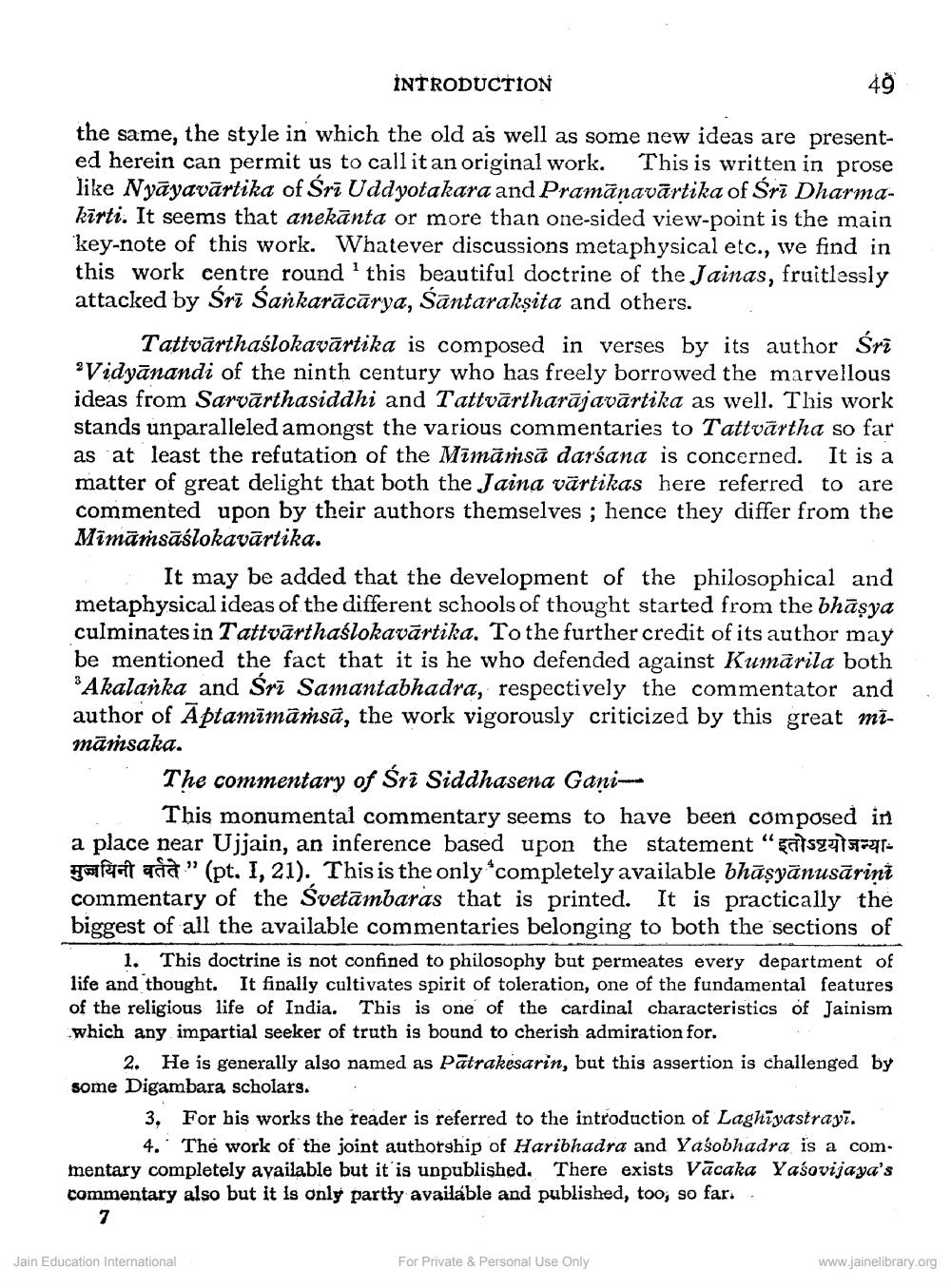________________
INTRODUCTION
49
the same, the style in which the old as well as some new ideas are presented herein can permit us to call it an original work. This is written in prose like Nyāyavārtika of Sri Udd yotakara and Pramānavārtika of Sri Dharmakirti. It seems that anekānta or more than one-sided view-point is the main key-note of this work. Whatever discussions metaphysical etc., we find in this work centre round this beautiful doctrine of the Jainas, fruitlessly attacked by Śrī Sankarācārya, Sāntarakṣita and others.
Tattvārthaílokavārtika is composed in verses by its author Sri Vidyānandi of the ninth century who has freely borrowed the marvellous ideas from Sarvārthasiddhi and Tattvārtharājavārtika as well. This work stands unparalleled amongst the various commentaries to Tattvārtha so far as at least the refutation of the Mīmāṁsā darśana is concerned. It is a matter of great delight that both the Jaina vārtikas here referred to are commented upon by their authors themselves ; hence they differ from the Mimāṁsāślokavārtika.
It may be added that the development of the philosophical and metaphysical ideas of the different schools of thought started from the bhāsya culminates in Tattvārthaślokavārtika, To the further credit of its author may be mentioned the fact that it is he who defended against Kumārila both
Akalanka and Sri Samantabhadra, respectively the commentator and author of Aptamīmāṁsā, the work vigorously criticized by this great mimāmsaka.
The commentary of Sri Siddhasena Gani
This monumental commentary seems to have been composed in a place near Ujjain, an inference based upon the statement“ atsiraferat ada" (pt. I, 21). This is the only completely available bhāsyānusārint commentary of the Svetāmbaras that is printed. It is practically the biggest of all the available commentaries belonging to both the sections of
1. This doctrine is not confined to philosophy but permeates every department of life and thought. It finally cultivates spirit of toleration, one of the fundamental features of the religious life of India. This is one of the cardinal characteristics of Jainism which any impartial seeker of truth is bound to cherish admiration for.
2. He is generally also named as Pātrakesarin, but this assertion is challenged by some Digambara scholars.
3. For his works the reader is referred to the introduction of Laghīyastrayi.
4. The work of the joint authorship of Haribhadra and Yaśobhadra is a commentary completely available but it is unpublished. There exists Vācaka Yaśovijaya's commentary also but it is only partly available and published, too, so far..
1
Jain Education International
For Private & Personal Use Only
www.jainelibrary.org




